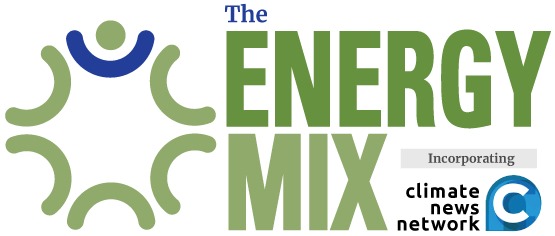Blocking Trump's Wrecking Ball: Push Back, Reach Out, or Both?
Don’t be surprised that Donald Trump and his cabinet nominees want to burn U.S. climate policy to the ground. It’s who they are, what they do. The question is: Who are we, and what do we do next?
How do you prevent four billion extra tonnes of climate pollution by 2030?
That’s the best estimate so far of the impact of Donald Trump’s climate and energy policies—if he gets to implement them. Which means our first big question for 2025 is how to avert as much of the damage as possible and hold as much ground as we can.
We’ll get it done the same way we take on any other problem that looks too massive to solve: imagine a big enough, wide enough set of solutions that will be up to the task, then move those solutions out into the world and scale them up—one bite, one step, one project, one community, one investment at a time.
Nothing we do will make 2025 the year we wanted or needed it to be. The year we may have thought it was going to be.
The outcome of Canada’s federal election will almost certainly leave a large share of our national climate strategy in cinders. Even if it doesn’t, the constitutional division of powers will almost always mean that every positive step takes twice as long and gets orders of magnitude more complicated than it needs to—in response to a rolling global emergency that pause for politics or jurisdictions, and is accelerating before our eyes.
And even if we do everything right on our side of the border, the next two to four years will be dominated by a maniacally autocratic regime in the United States that thrives on chaos, when the triple threat of climate change, pandemics, and anti-science disinformation is already promising quite enough of that.
So here we are at the starting gate, yet again. Our first assignment, all of us, is to get the awfulizing out of our system and move on. Because the only thing that matters, that will make a difference, is what we do about it.
That’s why it mattered late last year when the Joe Biden administration released an updated climate target [pdf] under the Paris climate agreement, calling for a 61 to 66% reduction in U.S. greenhouse gas emissions by 2035. In a December 19 statement, the White House declared that the plan focuses on
When the announcement hit the news wires, I didn’t take it seriously at first—because we know how this story ends. There is zero chance Biden’s pronouncement will survive a Trump juggernaut supported by both chambers of the U.S. Congress. So at first, the announcement just looked pointless and performative, and we’ve certainly had our fill of performative climate initiatives in Canada.
But climate analysts in the U.S. had a more nuanced take.
Oil Change International Campaign Manager Collin Rees took Team Biden to task for a statement that acknowledged but failed to act on a fossil fuel phaseout and dodged the country’s “unique responsibility to lead on climate action” as “history’s largest polluter and second-biggest current emitter”. But he added that “elements of this plan can serve as a blueprint for climate progress on the state, local, and international levels” that will be “crucial for climate action” during Trump v.2.
The announcement “underscores that working together to collectively address climate change is in the best interest of the United States and the world,” added Rachel Cleetus, policy director and lead economist for the Climate and Energy Program at the Union of Concerned Scientists. “While falling short of what the science requires, the updated U.S. NDC [this was the country’s updated Nationally Determined Contribution under the Paris accord) provides an important benchmark to propel further climate action by cities, states, Tribal nations, and businesses in the years ahead.”
That language echoed a passage in the White House statement that read like a call to action, not a last gasp:
All of this is an echo of the response to Trump’s first term in the Oval Office. By the time he was sworn in, city and state governments had joined civil society organizations and 630 businesses and investors, all of them stepping up to fill the gap. U.S. environmental groups bulked up their legal departments and California hired Obama-era attorney general Eric Holder to carry the fight.
In the end, none of that determined effort was enough to fully offset the impact of a rogue federal government intent on burning climate policy to the ground. But there were still lots of options to push back, slow them down, and limit the carnage. And every bit of effort mattered.
The Opposition Has Landed
In the early days and weeks after Trump’s second win, there was little evidence that a shocked, despondent opposition would rise to the challenge. Thankfully, that moment seems to have passed.
On December 2, California Governor Gavin Newsom—who’s widely expected to mount his own campaign for the 2028 Democratic presidential nomination—convened a special legislative session to help “Trump-proof” state laws. Options on the table included state electric vehicle rebates and a $25-million war chest to defend state policies regarding climate change, civil rights, immigration, and abortion access.
U.S. automakers will be asking the incoming administration to retain tailpipe emission regulations they once opposed, now that they’ve invested billions in the transition to electric vehicles.
In New York State, Democratic Governor Kathy Hochul closed out the year with a Climate Change Superfund Act that will charge major carbon polluters $75 billion over the next years for the impacts of their emissions. “With nearly every record rainfall, heat wave, and coastal storm, New Yorkers are increasingly burdened with billions of dollars in health, safety, and environmental consequences due to polluters that have historically harmed our environment,” Hochul said.
This Monday—two weeks before he leaves office, and four years to the day after Trump’s attempt to subvert the 2020 election with an armed insurrection—Biden is expected to block oil and gas leasing across 625 million acres of U.S. waters, equivalent to nearly a quarter of the country’s land mass. The New York Times says the measure “relies on a 70-year-old law that could make it difficult for the Trump administration to reverse it.”
And Bill Clinton-era labour secretary Robert Reich is looking to federal judges—the majority of them appointed by Democratic presidents—as “the only real firewall” against Trump’s excesses. “In light of Republican control over the White House and both chambers of Congress,” he writes, “litigation in the federal courts may be the only way to protect the rights of the tens of millions of Americans who didn’t elect Trump and even of many who did.”
Building Something Better
All of which tells you that Trump will do what he does. And the same interests in the U.S. that fought back last time, then brought us the past four years of imperfect but significant climate and energy progress, will do whatever they can to slow him down.
But the climate and energy transition is also about building something better, protecting and advancing the effort to drive down emissions while keeping households and communities healthy and whole. What do those solutions look like?
They need to be wide enough to match the scale of the challenge of our lifetimes.
Practical enough to make a real difference for people who’ve fallen through the cracks of a broken economy, quite rightly feel abandoned by the country’s political class, and more than likely voted for Trump—just as their Canadian counterparts have almost certainly given up on our own federal government.
Responsive enough to put emission reductions and the energy transition at the centre of all the other community challenges we face—from affordable housing to community health, commuting costs to food security, job security to livable neighbourhoods, and so much more.
Gracious enough to reach across the line and learn how a toolbox of climate solutions can make life better for people we don’t immediately agree with. Rather than asking, “What were you thinking”, our first question must always be: “How can I help?”
Quick enough to make a difference.
Simple enough to scale up, so that when we know what works—and we have so very many solutions that work—everyone gets to try it out.
Affordable enough, or at least fundable enough, that no one gets left behind.
The last word here goes to Dwight D. Eisenhower, the 1950s-era Republican president who closed out his term of office by railing against the gilded, über-entitled military-industrial complex of which Trump is a predictable, extreme, extremist result.
“Whenever I run into a problem I can’t solve, I always make it bigger,” Eisenhower said. “I can never solve it by trying to make it smaller, but if I make it big enough I can begin to see the outlines of a solution.”
I suppose the good news about Trump is that we don’t need to make the problem any bigger—he does that unassisted, with every breath he takes. But that means we win by pulling together a response that is as wide as the sky and as generous as our caring hearts, with the persistence and determination to rebuild the trust and community bonds that will turn this era around, once and for all.
That effort is already well under way, at every level of society, in more different ways than any of us will be able to count. And now it’s a new year. So—ready or not, let’s get back it. We’re on a tight deadline, and we have a bit of a to-do list to get through.
Cover photo: compujeramey/flickr



